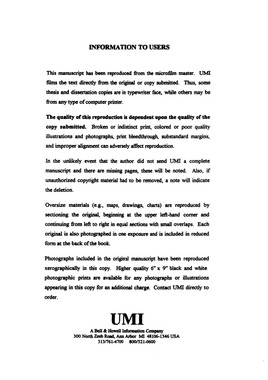| dc.contributor.advisor | Lilly, Doug, | en_US |
| dc.contributor.advisor | Fielder, Brian, | en_US |
| dc.contributor.author | Weber, Daniel Brian. | en_US |
| dc.date.accessioned | 2013-08-16T12:29:50Z | |
| dc.date.available | 2013-08-16T12:29:50Z | |
| dc.date.issued | 1997 | en_US |
| dc.identifier.uri | https://hdl.handle.net/11244/5530 | |
| dc.description.abstract | An interesting observation is made regarding the strongly heated experiments. The high drag state associated with the strong mountain wave and downslope windstorm control runs prevail but at a reduced level. The numerical experiments reveal that once a windstorm develops, a well-mixed boundary layer of modest depth (1.5 km) is unable to eliminate the high drag state completely. This result suggests that changes in the mean state are necessary for dissipation of the event. | en_US |
| dc.description.abstract | The two-dimensional simulations of the January 9, 1989 Boulder windstorm event show sensitivities, due to surface heating, that are consistent with observations and linear theory. Tests of similarly configured idealized two and three-dimensional heated mountain wave flows indicate that when the upstream Froude number is less than order unity, the results from the infinite ridge tests can, in general, be applied to a three-dimensional ridge of sufficient cross-flow length. The largest differences between the two and three-dimensional simulations are evident when the flow splits upstream of the mountain. This occurs for Froude numbers greater than unity. In instances where Fr $>$ 1, the pre-heating period steady state flow is substantially different than the infinite ridge case, and upstream blocking far outweighs the effects of parameterized surface heating. | en_US |
| dc.description.abstract | This study investigates the diurnal variability of the Central Colorado downslope windstorm via linear theory and numerical experiments. A simplified two layer linearized analytical solution is used to characterize the effects of a neutral boundary layer on the mountain wave environment. The theoretical results are compared to simulations from a newly developed mesoscale numerical model and to observations. The results indicate that parameterized surface heating decreases mountain wave intensity, in accordance with observed windstorm tendencies. In terms of the surface wave drag, the numerical solutions of heated flow over idealized mountain profiles conform to the linear analytical findings to within a factor of two. Owing to a parameterized heating cycle, decreases in steady state surface wave drag were observed to be as large as 50%. The decline of wave activity in the simulations and analytical solutions was found to be a function of the mixed layer depth, with thicker mixed layers producing larger reductions. | en_US |
| dc.format.extent | xviii, 242 leaves : | en_US |
| dc.subject | Physics, Atmospheric Science. | en_US |
| dc.subject | Numerical analysis. | en_US |
| dc.subject | Windstorms Colorado. | en_US |
| dc.title | An investigation of the diurnal variability of the Central Colorado downslope windstorm. | en_US |
| dc.type | Thesis | en_US |
| dc.thesis.degree | Ph.D. | en_US |
| dc.thesis.degreeDiscipline | School of Meteorology | en_US |
| dc.note | Advisers: Brian Fielder; Doug Lilly. | en_US |
| dc.note | Source: Dissertation Abstracts International, Volume: 58-08, Section: B, page: 4283. | en_US |
| ou.identifier | (UMI)AAI9806323 | en_US |
| ou.group | College of Atmospheric & Geographic Sciences::School of Meteorology | |
